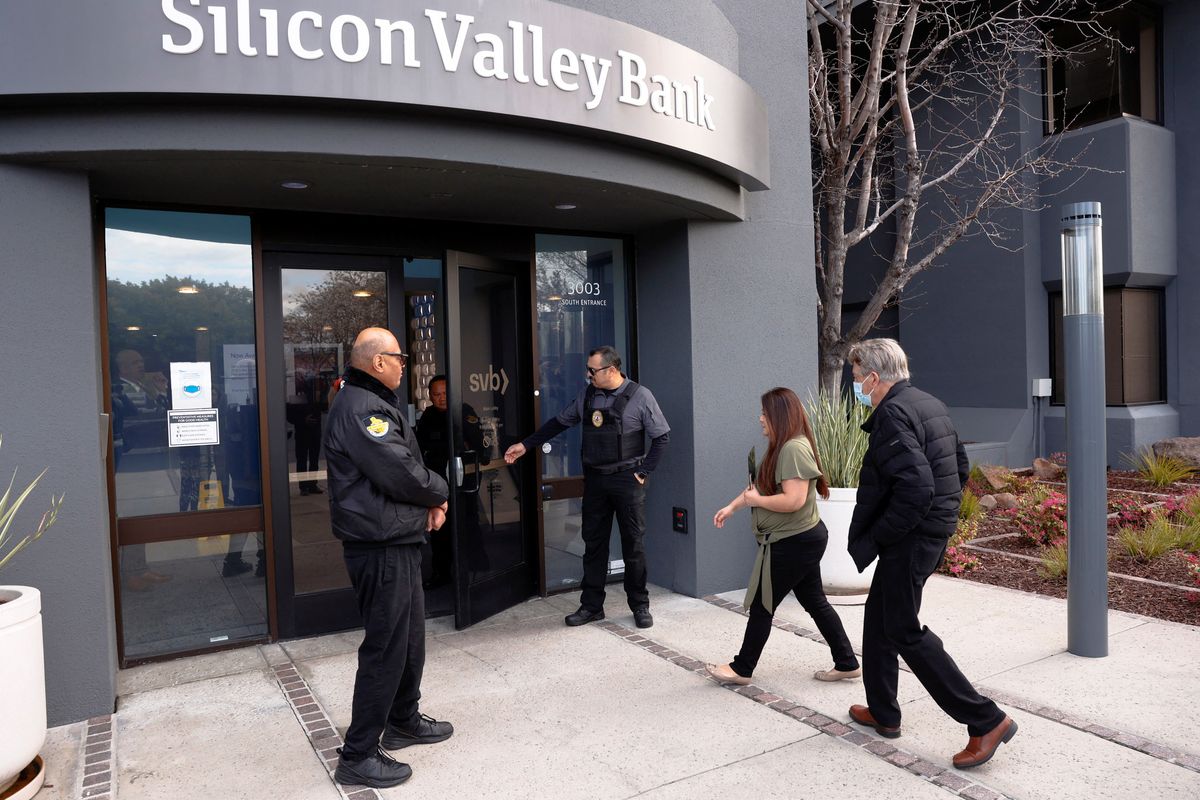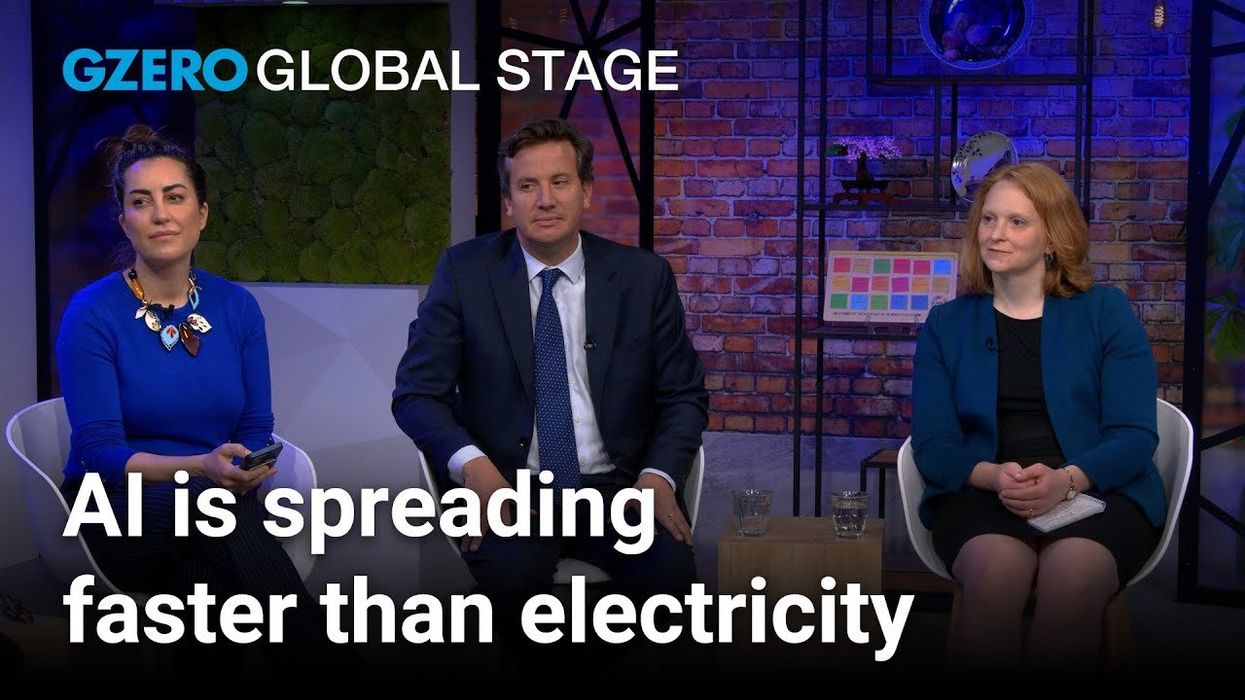Wondering about all the fuss over the collapse of Silicon Valley Bank? To get a handle on what happened and why it matters, we talked to Celeste Tambaro, managing director of Eurasia Group’s financial institutions practice. This interview has been edited for length and clarity.
GZERO: How did SVB get into trouble?
Celeste Tambaro: Although SVB was not a widely recognized name among US banks up until last week, the bank has been around for about 40 years and has built an important niche servicing investors and entrepreneurs in the emerging technology space. As you can imagine, given SVB’s positioning in the market, it experienced significant growth during the investment boom in private technology companies that occurred in the wake of the pandemic. This investment surge was fueled, in part, by continued low-interest rates and easy financial conditions during the late-2020/early-2021 period that made capital cheap and left the VC-funded start-up world flush with cash. This cash flowed into SVB in the form of deposits, or in banker’s terms, its funding base, which reached nearly $190 billion at its height. As a result, the bank was left with a lot of excess liquidity earning very low yields. In an effort to earn higher returns on this liquidity, SVB invested in a portfolio of around $120 billion longer duration U.S. Treasury bonds and fixed-rate mortgage securities. Ultimately, SVB was sitting on a highly concentrated bet on tech start-ups and a portfolio that was vulnerable if interest rates rose quickly.
And we all know what happened next. Russia invaded Ukraine, hyper-charging pandemic-driven global inflation, leading the Fed and Central Banks around the world to hike rates fairly aggressively in order to get ahead of the inflation curve. As a result, financial conditions have tightened, capital has become more expensive, and the growth outlook has become cloudier. This environment has weighed on investor sentiment in the tech space, so cash has not been flowing as freely in the start-up community, nor into SVB as new deposits. In addition to the negative impact that rising rates had on SVB’s deposit base, they also led to a decline in the value of SVB’s longer-duration portfolio as bond prices fell.
As deposit withdrawals picked up pace in February and early March, SVB’s management decided to shore up its liquidity and sell down $21 billion of its longer-dated securities portfolio. The problem was that any sale would be at a loss given the sharp move in interest rates. The sale took place and then things got worse. On Wednesday, management reported a realized loss of $1.8 billion on the sale – it was also attempting to raise an additional $2.25 billion of capital to bolster its balance sheet. But time was not on the bank’s side. SVB was quickly losing the confidence of the bond rating agencies, the market, and its key customers, and last Thursday the capital raise fell through. High-profile VC investors were sounding the alarm on the health of the bank, and liquidity concerns quickly shift to concerns that the SVB was insolvent. By Friday morning, a final frenzy to withdraw deposits, a so-called run-on-the-bank, occurred. Last-ditch attempts to sell the bank fell through, and by Friday afternoon SVB as we knew it was gone. That old familiar lesson yet again: Banks can go to zero if not run properly and the market and customers lose confidence.
What happened next?
By Friday afternoon, regulators intervened to stabilize the situation. The FDIC placed SVB into receivership, taking charge of the bank and its assets. Insured depositors, those with deposit balances up to $250,000, were to have full access to their deposits as of Monday morning. At the time, the question remained what would happen to those clients of the bank with uninsured deposits. This set off a panic among the tech start-up community that feared it would be unable to support the ongoing operations of their businesses without access to their deposits – would they be able to meet payroll or pay suppliers? The concern in the tech sector reached a fever pitch, while fears of spreading contagion among other smaller or regional banking institutions persisted.
Over the weekend, in response to a building crisis, the Biden Administration, the FDIC, and the Federal Reserve moved to contain the fallout. First, financial regulators in the US set up a backstop to protect all depositors, both insured and uninsured, of SVB and Signature Bank. The latter was also taken over by regulators in NY on Friday as it suffered its own battle with rapid deposit withdrawals. This move protects all depositors of both banks, but not bondholders or equity investors. As per regulatory guidelines, any losses to the Deposit Insurance Fund to support uninsured depositors will be recovered by a special assessment of the banks. These measures should help stem the risk of new runs on uninsured deposits at other banks while mitigating risks of spillovers to the real economy.
Separately, the Fed announced that it was creating a separate Bank Term Funding Program to ensure adequate liquidity to banks. This program offers banks loans of up to one year against high-quality, liquid assets (typically US Treasuries or mortgage bonds), with collateral valued at part. This is important as banks typically were required to take a haircut on collateral when they approach the Fed discount window. This new facility, which comes with better terms and less stigma, enables banks to raise liquidity to meet depositor demands without selling off bond holdings at a loss – as SVB did last week.
And finally, on Monday, the FDIC transferred SVB assets to a new bridge bank, Silicon Valley Bank, N.A. The FDIC named Tim Mayopoulus, former head of Fannie Mae, as the CEO of the bridge bank as SVB’s senior management was removed once regulators intervened.
Where do we go from here?
Well, there are clearly ongoing ripple effects from the SVB failure. First, banks in the US and the world took a hit last week on the sudden shock of a large U.S. player imploding almost overnight. However, since the Global Financial Crisis, large banks in the US have been subject to strict capital requirements, which are regulatory standards requiring banks to maintain adequate levels of liquid capital, assets they can sell easily, relative to their holdings. These requirements, which are particularly stringent for larger banks considered “too big to fail,” are meant to keep banks solvent and to keep the financial system healthy. Large banks in the U.S. are recognized as well-capitalized and are regularly stress tested to ensure they are meeting regulatory standards. This prevents a situation like SVB’s blow-up from infecting the entire system. However, U.S. legislation allows for smaller, often regional or community banks, considered less critical to the system based on the size of consolidated assets, to face less stringent requirements. This “tailored” approach to regulation has been called into question in the past and will likely draw attention again given the events of last week, especially if volatility among bank stock, particularly regional players, persists.
Considering the sector more broadly speaking, banks are experiencing pressure on deposits as customers are looking for higher yields in a rising interest rate environment. This is leading certain banks to increase yields they pay on deposits. Another way of putting this is banks are facing increasing pressure on funding costs. At the same time, banks that increased exposure to longer-duration bonds during the pandemic are also subject to the impact of rising interest rates on their portfolios. If banks sell a portion of these portfolios before the underlying securities reach maturity, they will realize losses on these exposures. Both higher funding costs and lower valuation on bond portfolios will weigh on the outlook for bank earnings.
Are there spillover risks to global banks and the global economy?
In terms of global macro, on balance, Eurasia Group expects that in the absence of further material financial stress, the Fed will go ahead and raise rates by 25 basis points at its next meeting on March 22. But the tightening of financial and credit conditions could prove sharp and disruptive, and the financial stability risks will not go unnoticed by central banks around the world. This might temper the appetite for continuing to tighten rapidly. The next watchpoint in this regard will be the European Central Bank, which meets on March 16.






